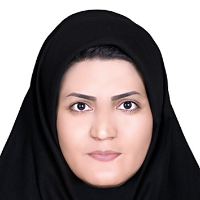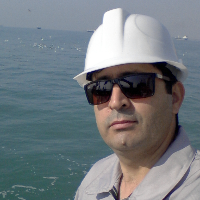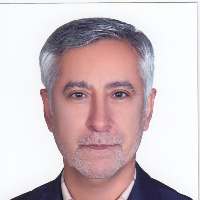دکتر سیده اکرم جویباری
-
در این پژوهش، تاثیر پدیده مونسون بر مشخصه های بافتی رسوبات سواحل ایرانی دریای عمان بررسی گردید. بدین منظور از 13 ایستگاه نمونه برداری های لازم بر اساس استانداردهای رسوب شناسی دریایی انجام شد. بررسی میزان اندازه ذرات در نمونه های پیش و پس از وقوع مونسون نشان داد که بافت این رسوبات ماسه، ماسه رسی، رس ماسه ای و رس می باشد. آنالیز دانه بندی نشان داد مقدار ماسه و رس در نمونه های پیش از مونسون ایستگاه های کم عمق و نزدیک به ساحل به ترتیب بین 43 تا 97 و صفر تا 27 درصد متغیر است. این مقادیر در ایستگاه های ژرف و دور از ساحل به ترتیب بین 8 الی 45 و 54 الی 82 درصد در تغییر است. مقادیر ماسه و رس در نمونه های پس از مونسون ایستگاه های کم ژرفا و نزدیک به ساحل به ترتیب بین 68 تا 96 درصد و صفر تا 13 درصد و در ایستگاه های ژرف و دور از ساحل در نمونه های پس از مونسون بین 8 تا 22 درصد و 58 تا 86 درصد در نوسان است. میزان مواد آلی رسوبات در بیشتر ایستگاه های مطالعاتی بین 1 تا 3 درصد متغیر و در محدوده طبیعی بود. افزایش ماده آلی تحت تاثیر فعالیت های انسانی و بافت دانه ریز رسوبات می باشد و کاهش آن نیز می تواند ناشی از ورود پسآب شور به محیط خلیج باشد. میزان کربنات کلسیم در رسوبات ارتباط نزدیکی با میزان ماسه موجود در رسوبات دارد.کلید واژگان: مشخصه های فیزیکی, رسوب, مونسون, ساحل دریای عمانIn this research, the effect of monsoon phenomenon on the textural characteristics of the sediments of Iranian coasts of the Oman Sea was investigated. For this purpose, necessary sampling was done from 13 stations based on marine sedimentological standards. According to the amounts of sand, silt and clay in the pre-monsoon and post-monsoon samples, the sedimentary types of sand, clayey sand, sandy clay and clay were identified in the studied stations. Granulometric analysis showed that the amount of sand and clay in pre-monsoon samples of shallow and near-shore stations (Tiss, Desalination, Center of the Bay, Ramin, Beris and Pasabandar) range from 43 to 97 and 0 – 27%, respectively. On the other hand, these values change between 8 – 45% and 54 - 82 % in deep and offshore stations, respectively. The amount of sand and clay in post-monsoon samples of shallow and near-shore stations vary between 68% - 96% and 0% - 13%, respectively. The amount of sand and clay in deep stations and far from the coast in post-monsoon samples fluctuates between 8-22% and 58-86%. The amount of organic matter in sediments varies between 1 and 3% in most of the studied stations and is within the normal range. This amount showed a slight increase in Konarak and Ramin stations due to human pollutants and fine-grained sedimentary texture. The low amount of organic matter in the desalination station can be caused by the inflow of more saline wastewater into the bay environmentKeywords: Physical Characteristics, Sediment, Monsoon, Coast Of Oman
-
سازند آسماری(روپلین-بوردیگالین) یکی از شناخته ترین سازندهای ایران است. به منظور بررسی سنگ چینه نگاری و محیط رسوبی برشی از این سازند در کوه نمکی خمیر و اقع در فروافتادگی بندرلنگه انتخاب گردید. در این تعداد 70 مقطع نازک میکروسکوپی آهکی و 3 نمونه مارنی (XRF) برای شناخت ریزرخساره ها شرایط ته نشینی مورد ارزیابی قرار گرفت. سازند آسماری در این برش 225 متر ستبرا و شامل رخساره آهکی و مارنی است. مطالعه پتروگرافی منجر به شناسایی 10 ریزرخساره متعلق به کمربندهای رخساره ای پهنه جزرومدی، لاگون، پشته کربناته و دریای باز گردید که در محیط رمپ کربناته تک شیب نهشته شده اند. ترکیب اکسیدهای رخساره مارنی نیزحاکی از وجود کانی های کربناتی، کوارتز و کانی های رسی می باشد که همراه با مشاهدات صحرایی و تناوب رخساره های آهکی نشانگر ته نشست این رخساره در در یک محیطی از نوع دریای باز می باشد. در نهایت به نظر می رسد تنوع رخساره ای و فسیلی سازند آسماری در برش مذکور به گونه ای که در زمان اکیتانین این سازند در فاصله نزدیک تری به خط ساحل و در زمان روپلین و شاتین-بوردیگالین در فاصله دورتری نسبت به خط ساحل قرار داشته است.
کلید واژگان: سازند آسماری, محیط رسوبی, سنگ چینه نگاری, کوه نمکی خمیر, فروافتادگی بندر لنگهAsmari Formation (Rupelian-Burdigalian) is one of the most well-known formations in Iran. In order to investigate the stratigraphy and sedimentary environment, a section of this formation was selected in Khamir salt mountain section in Bandarlengeh embayment. In this number, 70 limestone microscopic thin sections and 3 marl samples (XRF) were evaluated to identify the microfacies and the sedimentation conditions.The petrographic study led to the identification of 10 microfacies belonging to the facies belts of tidal, lagoon, carbonate bar, open marine, which were deposited in the homoclinal carbonate ramp environment. The composition of marl facies oxides also indicates the presence of carbonate minerals, quartz and clay minerals, which along with field observations and alternating calcareous facies suggest that this facies was deposited in an open marine environment. Finally, it seems that the facies and fossil diversity of the Asmari Formation in the mentioned section is such that during the Aquitanian stage, this formation was located closer to the coast line and during the Rupelian and Chattian-Burdigalian times, it was located at a further distance from the coast line.
Keywords: Asmari formation, sedimentary environment, stratigraphy, Khamir salt mountain, Bandarlengeh embayment -
سازند سروک یکی از مخازن مهم کربناته در فرو بوم دزفول است. به منظور ارزیابی کیفیت مخزنی این سازند در یکی ازمیدان های فروبوم دزفول از روش آنالیز خوشه ای گرافیکی و مقایسه با یافته های پتروگرافی استفاده گردید. یافته ها نشان داد که سازند سروک در میدان مورد مطالعه از 8 ریزرخساره متعلق به زیرمحیط های لاگون، پشته کربناته، رمپ میانی و رمپ خارجی که در یک محیط رمپ تک شیب نهشته شده اند تشکیل شده است. عمده فرآیندهای دیاژنزی موثر بر این مخزن، شامل سیمانی شدن، انحلال، شکستگی، استیلولیتی شدن و دولومیتی شدن هستند. نتایج آنالیزخوشه ای گرافیکی منجر به شناسایی 3 رخساره الکتریکی گردید که رخساره EF1 ضعیف ترین پارامترهای مخزنی و رخساره EF3 بهترین وضعیت مخزنی را به خود اختصاص دادند. عمده ریزرخساره های EF1 ریزرخساره های گرینستونی و عمده ریزرخساره های EF3 منطبق بر ریزرخساره های وکستونی و پکستونی بوده است. بر این اساس به نظر می رسد زیرمحیط لاگون نسبت به سایر زیرمحیط ها به خصوص پشته کربناته از وضعیت مخزنی بهتری برخوردار می باشد و این مهم نشانه عملکرد متفاوت فرآیندهای دیاژنزی در این زیر محیط ها می باشد. در یک روند قایم نیز بیشترین حجم ستون هیدروکربنی در ستبرای رخساره الکتریکی EF3 و کمترین منطبق بر EF1 است این مهم حاکی از صحت و دقت رخساره های الکتریکی شناسایی شده است به منظور ارزیابی کیفیت مخزنی می باشد. درمجموع می توان بیان نمود که استفاده از آنالیز خوشه ای گرافیکی و مقایسه با یافته های پتروگرافی راهکار مناسبی برای ارزیابی دقیق از کیفیت مخزنی مخازن کربناته است.
کلید واژگان: کیفیت مخزنی, آنالیز خوشه ای گرافیکی, سازند سروک, پتروگرافیSarvak Formation is one of the important carbonate reservoirs in Dezful Embayment. In order to evaluate the reservoir quality of this formation in one of the Dezful Embayment fields, multi-resolution graph-based method was used and compared with petrographic findings. The findings showed that the Sarvak formation in the studied field consists of 8 microfacies belonging to the sub-environments of the lagoon, carbonate bar, middle ramp and outer ramp, which were deposited in a homoclinal ramp environment. The main diagenesis processes affecting this reservoir include cementation, dissolution, fracture, stylolitization, and dolomitization. The results of multi-resolution graph-based analysis led to the identification of 3 electrofacies, EF1 electrofacies had the weakest reservoir parameters and EF3 facies had the best reservoir status. The majority of EF1 microfacies are grainstone microfacies and the majority of EF3 microfacies correspond to wackstone and packstone microfacies. Based on this, it seems that the lagoon sub-environment has a better reservoir condition than other sub-environments, especially the carbonate bar, and this is an important sign of the different performance of diagenesis processes in these sub-environments. In a vertical trend, the highest volume of hydrocarbon column is in the EF3 electrofacies and the lowest is EF1. In general, it can be stated that the use of multi-resolution graph-based analysis and comparison with petrographic findings is a suitable solution for accurate evaluation of the reservoir quality of carbonate reservoirs.
Keywords: Reservoir quality, MRGC, Sarvak formation, Petrography -
سازند ایلام یکی از مخازن نفتی کربناتی مهم حوضه زاگرس و فروبوم دزفول است. به منظور شناسایی ریز رخساره و شرایط ته نشینی و فرآیندهای دیاژنزی تعداد 100 مقطع نازک میکروسکوپی از یک چاه این مخزن در یکی از میادین نفتی فروبوم دزفول مورد ارزیابی قرار گرفت. از داده های تخلخل و تراویی برای بررسی کیفیت مخزنی استفاده شد. مطالعه پتروگرافی منجر به شناسایی 9 ریز رخساره متعلق به کمربندهای رخساره ای لاگون، پشته کربناته، رمپ میانی و رمپ خارجی گردید که در محیط رمپ کربناته تک شیب نهشته شده اند. مهم ترین فرآیندهای دیاژنزی شناسایی شده مخزن ایلام شامل سیمان شدگی، انحلال، شکستگی، میکرایتی شدن، استیلولیت زایی و دولومیتی شدن هستند. بر مبنای طبقه بندی کیفی مخزن و نمودارهای پتروفیزیکی لوسیا رخساره های لاگون و رمپ میانی وضعیت مخزنی متوسط و رخساره های پشته کربناته و رمپ خارجی وضعیت مخزنی ضعیفی دارند. کیفیت مخزنی رخساره های لاگون و رمپ میانی در ارتباط با وجود تخلخل-های بهم مرتبط و کانالی می باشد. رخساره های پشته کربناته نیز به دلیل سیمانی شدن شدید و وجود تخلخل های غیرمرتبط مانند تخلخل قالبی ، دارای تراوایی پایینی است و وضعیت مخزنی ضعیفی دارد. به طور کلی سازند ایلام در میدان مورد مطالعه به لحاظ مخزنی در وضعیت ضعیفی قرار دارد که این مهم می تواند علاوه بر کنترل کننده های رخساره ای در ارتباط با عدم گسترش شکستگی و دولومیتی شدن و گسترش بیش از حد سیمانی شدن در این رخساره ها باشد. از این رو سازند ایلام در در میدان مورد مطالعه علی رغم داشتن توالی کم عمق بیشتر نسبت به عمیق به دلیل فرآیندهای دیاژنتیکی از عملکرد مخزنی ضعیفی برخوردار می باشد.
کلید واژگان: کیفیت مخزنی, محیط رسوبی, سازند ایلام, فروبوم دزفولThe Ilam formation is one of the important carbonate oil reservoirs of the Zagros and Dezful embayment basins. In order to identify the microfacies and depositional conditions and diagenesis processes, 100 microscopic thin sections from one well of this reservoir in one of the Dezful embayment oil fields were evaluated. Porosity and permeability data were used to check reservoir quality. The petrographic study led to the identification of 9 microfacies belonging to the facies belts of lagoon, barier, middle ramp and outer ramp, which were deposited in the homoclinal ramp environment. The most important diagenesis processes identified in Ilam reservoir include cementation, dissolution, fracture, micriteization, stylolitization, and dolomitization. Based on the qualitative classification of the reservoir and Lucia's petrophysical diagrams, the lagoon facies and the middle ramp have an average reservoir status, and the carbonate barier facies and the outer ramp have a weak reservoir status. The reservoir quality of the lagoon and middle ramp facies is related to the existence of interconnected and channel porosities. Due to strong cementation and the presence of unrelated porosity such as mold porosity, the carbonate barier facies has low permeability and has a poor reservoir status. In general, the Ilam Formation in the studied field is in a weak state in terms of reservoir, which can be important in addition to the facies controllers in relation to the lack of expansion of fracture and dolomitization and the excessive expansion of cementation in these facies. Therefore, the Ilam Formation in the studied field has a weak reservoir performance due to diagenetic processes, despite having more shallow sequences than deep ones.
Keywords: Reservoir quality, Sedimentary environment, Ilam Formation, Dezful embayment -
سازند سروک یکی از مخازن مهم نفتی حوضه زاگرس است. در این پژوهش برای شناسایی ریزرخساره و شرایط ته نشینی و فرآیندهای دیاژنزی تعداد 150 مقطع نازک میکروسکوپی مورد ارزیابی قرار گرفت. از داده های تخلخل و تراویی برای تعیین واحدهای جریانی و تحلیل وضعیت مخزنی با روش پتروفیزیکی لوسیا استفاده شد. مطالعه پتروگرافی منجر به شناسایی 10 ریزرخساره متعلق به کمربندهای رخساره ای لاگون، پشته کربناته، رمپ میانی و رمپ خارجی گردید که در محیط رمپ کربناته تک شیب نهشته شده اند. مهمترین فرآیندهای دیاژنزی شناسایی شده مخزن سروک شامل سیمان شدگی، انحلال، دولومیت زایی، شکستگی و استیلولیت زایی هستند. حلیل داده های تخلخل- تراوایی با استفاده از شاخص FZI نیز منجر به شناسایی 3 واحد هیدرولیکی گردید. واحد HFU1 با ضعیف ترین وضعیت مخزنی به طور عمده با رخساره های لاگون و رمپ خارجی مشخص می شود و واحد مخزنی HFU2 و HFU3 دارای وضعیت مخزنی بهتری است و عمدتا دارای رخساره های کمربند رخساره ای لاگون، پشته کربناته و رمپ میانی هستند. بررسی وضعیت مخزنی بر مبنای تخلخل، تراوایی، شاخص کیفیت مخزن، شاخص زون جریان و توان مخزنی نشان داد وضعیت مخزنی سازند سروک در کلاس خوب تا خیلی خوب واقع می شود. همچنین برای هر کمربند رخساره ای نیز می توان بیان نمود که رخساره های لاگون و پشته کربناته دارای شاخص های مخزنی بهتری می باشند. وضعیت مخزنی متفاوت کمربندهای رخساره ای سازند سروک نشان از عملکرد توام فرآیندهای رسوبی و دیاژنزی و تاثیر پیچیده بر روی توالی مخزن و پارامترهای مخزنی آن در منطقه مورد مطالعه داشته است.کلید واژگان: ریزرخساره, واحد جریانی, توان مخزنی, سازند سروک, استان خوزستانSarvak Formation is one of the important oil reservoirs in the Zagros Basin. In this study, 150 thin sections were evaluated to identify microfacies and sedimentation conditions and diagenetic processes. Porosity and permeability data were used to determine the flow units and to analyze the Reservoir quality by Lucia petrophysical method. Petrographic study led to the identification of 10 microfacies belonging to lagoon facies belts, Barier , middle ramps and outer ramps that were deposited in the environment of homoclinal carbonate ramps. The most important diagenetic processes identified in the Sarvak reservoir include cementation, dissolution, dolomitization, fracture and stylolitization. Analysis of porosity-permeability data using FZI index also led to the identification of 3 hydraulic units. The HFU1 unit with the weakest reservoir status is mainly characterized by lagoon microfacies and outer ramps, and the HFU2 and HFU3 reservoir units have a better reservoir status and mainly have lagoon facies belt, carbonate bar and middle ramps. Porosity, permeability, reservoir quality index, flow zone index and reservoir potential showed that the reservoir status of Sarvak Formation in the study area is in good to very good class. It can also be said that for each facies belt, lagoon facies and carbonate bar have better reservoir indices. The different reservoir status of the facies belts of Sarvak Formation shows the combined performance of sedimentary and diagenetic processes and has a complex effect on the reservoir sequence and its reservoir parameters in Southwest of Iran.Keywords: Microfacies, Flow unit, Reservoir potential, Sarvak Formation, Khuzestan Province
-
کانون فرسایش بادی هندیجان در استان خوزستان و جنوب غرب کشور ایران قرار دارد. در دهه اخیر، با افزایش نرخ فرسایش و تمرکز کانون های مهم گرد و غبار در این گستره، مطالعه غلظت و آلودگی فلزات سنگین در این منطقه اهمیت بسزایی یافته است. بدین منظور، تعداد 33 نمونه خاک از این پهنه بر مبنای نوع کاربری با توزیع یکنواخت برداشت شد و مورد تحلیل ICP-MSS قرار گرفت. داده های حاصل نشان می دهد که بیشترین میانگین غلظت فلزات به ترتیب متعلق به فلزات Cd<As<Cu<Pb<Zn<Ni<Cr است. شاخص های غنی شدگی، شاخص زمین انباشت و عامل آلودگی نشان داد که بیشترین آلودگی در پهنه هندیجان به ترتیب متعلق به فلزات نیکل، کروم، آرسنیک، کادمیوم و سرب است. از سویی دیگر، ارزیابی خطر زیست محیطی (RI) در پهنه مذکور نشان داده این منطقه دارای خطر زیست محیطی کمی می باشد که در بین فلزات مورد مطالعه نیز بیشترین خطر زیست محیطی متعلق به دو فلز آرسنیک و کادمیوم است. نتایج آزمون PCA نشان داد که فلزات نیکل، روی، مس و سرب دارای دو منشا زمین زاد و انسان زاد به صورت توام هستند و منشا فلزات آرسنیک و کادمیوم نیز فعالیت های انسانی است. باتوجه به الگوی توزیع فلزات می توان بیان کرد که فعالیت های مرتبط با اسکله صیادی بحرکان از یک سو و سکوهای نفتی دور از ساحل میدان نفتی هندیجان از سویی دیگر، موجب تغلیظ فلزات نیکل، سرب، روی و مس در جنوب گستره مورد مطالعه شده است. فعالیت های کشاورزی نیز غلظت فلزات کادمیوم و آرسنیک را در این گستره کنترل کرده، منشا غلظت کروم نیز پساب های کشاورزی، آلودگی های ترافیکی و آلودگی های باقی مانده حاصل از جنگ هشت ساله عراق و ایران تعیین شد.
کلید واژگان: فرسایش بادی, شاخص های زیست محیطی, گستره هندیجان, نرخ فرسایش, ICP-MSSHendijan wind erosion center is located in Khuzestan Province and southwest of Iran. In the last decade, with the increase of erosion rate and concentration of important dust centers in this area, the study of heavy metal concentration and pollution in this area has become very important. For this purpose, 33 soil samples of this zone were collected based on land use change and with the aim of uniform distribution and analyzed by ICP-MSS. The obtained data show that the highest average concentrations of metals belong to Cd <As <Cu <Pb <Zn <Ni <Cr, respectively. Enrichment indices, geo-accumulation index and contaminant factor showed that the highest pollution in Hindijan area belongs to nickel, chromium, arsenic, cadmium and plumbum, respectively. On the other hand, ecological risk assessment in the mentioned area has shown that this region has a low ecological risk that among the studied metals, the highest ecological risk belongs to the two metals arsenic and cadmium. The results of PCA test showed that the metals nickel, zinc, copper and lead have both non-anthropogenic and anthropogenic sources and the source of arsenic and cadmium metals is human activities. According to the pattern of metal distribution, it can be stated that the activities related to Bahrkan fishing pier on the one hand and oil rigs off the coast of Hindijan oil field on the other hand have caused the concentration of nickel, lead, zinc and copper in the south of the study area. Agricultural activities have also controlled the concentration of cadmium and arsenic metals in this area, and the source of chromium concentration was determined as agricultural effluents, traffic pollution and residual pollution from the 8-year Iraq-Iran war.
Keywords: Dust, Environmental indicators, Hendijan range, ICP-MSS, Wind erosion -
The present study aims to investigate the petrographic, geochemical features, and depositional facies of the Late Triassic Ashin Formation (Nakhlak Group, central Iran). For this purpose, 100 thin sections, and 13 samples of fine-grained sedimentary rocks were analyzed for their petrographic and geochemical characteristics, taken from a 330-m thick section of this formation. The petrographic types identified in this formation include sandstone, siltstone and limestone. This study suggests limestone facies are deposited in upper parts of the distal submarine fan towards the shore, sandstone facies are deposited in the middle part of the distal submarine fan, and the shale facies are deposited in lower parts of the distal submarine fan towards the abyssal plain by turbidity currents. The plotting of petrographic data on ternary diagrams for compositional classification illustrate their composition as litharenites, sub-litharenites, and a few litharenite-feldspathic and shales. Discrete diagrams refer to a tectonic setting of a continental arc complex and the active continental margin. The results of the modal analysis and geochemical data indicate the orogenic re-cycling for these deposits. CIA and CIW indexes indicate moderate weathering of the source area under semi-arid to semi-humid climates.Keywords: Facies Analysis, Provenance, Geochemistry, Ashin Formation
-
پدیده ی ریزگرد از مهم ترین چالش های زیست محیطی جوامع امروزی می باشد. شناخت این پدیده و راهکارهای مقابله با آن از مباحث نوین در رسوب شناسی محیطی است. شناسایی کانون های ریزگرد با استفاده از روش های متعددی همچون تکنیک دورسنجی و ماهواره ای، مطالعات رسوب شناسی و ژیوشیمی، ردیابی رسوب با کمک مدل های آماری و داده کاوی و یا تلفیقی از این روش ها امکان پذیر است. مهم ترین عوامل ایجاد ریزگرد عبارتند از خشکسالی، فرسایش، عدم وجود پوشش گیاهی و هم چنین مدیریت ناصحیح منابع آبی می باشد. برای مقابله با آثار ریزگرد مالچ پاشی، احداث بادشکن، احداث تله های رسوبی و مدیریت صحیح منابع آب از مهم ترین فاکتورها و راهکارهای کاهش توفان های ریزگرد و تثبیت کانون های گردوغبار می باشد. پدیده ریزگرد تاثیر مستقیم بر سلامت انسان و بخش کشاورزی و ساخت و ساز و تاثیر مستقیم و غیرمستقیم بر اقتصاد و کاهش کیفیت زندگی داشته است. وجود 7 کانون داخلی ریزگرد در کنار حدود 5 کانون خارجی ریزگرد در استان خوزستان، سبب شده که این استان همواره در معرض توفان های گرد و غبار قرار گیرد. ترکیب رسوب شناسی این ریزگردها عموما در سه گروه سیلیکات، کربنات و تبخیری جای می گیرد و تیپ رسوبی عمده نهشته های کانون های داخلی دشت خوزستان گل ماسه ای با کمی گراول است. پارامترهای رسوب شناسی نهشته های کانون های گرد و غبار دشت خوزستان در یک روند قایم از شمال به جنوب بهبود پیدا می کنند. خاستگاه عمده ی نهشته های کانون های داخلی گنبدهای نمکی، سازندهای مارنی، ماسه سنگی و کنگلومرایی می باشد. پایش های زیست محیطی بر روی کانون های ریزگرد و نمونه های ریزگرد دشت خوزستان حاکی از وجود آلودگی های زیست محیطی متاثر از جنگ تحمیلی، فعالیت های نفتی و پتروشیمی در کنار فعالیت های صنعتی و کشاورزی می باشد.کلید واژگان: ریزگرد, کانون ریزگرد, دشت خوزستانApplied Sedimentology, Volume:7 Issue: 14, 2020, PP 129 -142The phenomenon of fine dust is one of the most important environmental challenges nowadays. Recognition of this phenomenon and strategies in dealing with it is one of the new topics in environmental sedimentology. Detection of dust centers is possible by using various methods such as telemetry and satellite techniques, sedimentology and geochemistry studies, sediment tracking with the help of statistical models and data mining or a combination of these methods. The most important causes of dust are drought, erosion, lack of vegetation and improper management of water resources. To deal with the effects of dust, mulching, construction of windbreaks, construction of sediment traps and proper management of water resources are the most important factors and strategies to reduce dust storms and stabilize dust hotspots. The dust phenomenon has had a direct impact on human health and the agricultural and construction sectors, and imposed a direct and indirect impact on the economy and reduced quality of life. Existence of seven internal dust centers along with about 5 external dust centers in Khuzestan province has caused this province to be constantly exposed to dust storms. The sedimentological composition of these fine dusts generally falls into three groups: silicate, carbonate and evaporation, and the main sedimentary type of deposits in the interior of Khuzestan plain is sandy mud with a little gravel. Sedimentological parameters of deposits of dust centers of Khuzestan Plain improve in a vertical trend from north to south. The main sources of deposits of internal foci are salt domes, marl formations, sandstone and conglomerate. Environmental monitoring on dust centers and fine dust samples in Khuzestan Plain indicates the existence of environmental pollution affected by the imposed war, oil and petrochemical activities along with industrial and agricultural activities.Keywords: Dust, Dust Center, Khuzestan plain
- این فهرست شامل مطالبی از ایشان است که در سایت مگیران نمایه شده و توسط نویسنده تایید شدهاست.
- مگیران تنها مقالات مجلات ایرانی عضو خود را نمایه میکند. بدیهی است مقالات منتشر شده نگارنده/پژوهشگر در مجلات خارجی، همایشها و مجلاتی که با مگیران همکاری ندارند در این فهرست نیامدهاست.
- اسامی نویسندگان همکار در صورت عضویت در مگیران و تایید مقالات نمایش داده می شود.






